Combat aircraft. German "Whale", the conqueror of the Russian North
In general, there is no exact date, but around our time, the Dornier product can celebrate its centenary. Yes, Claude Dornier designed his "Whale" in the early 20s. And the fact that the boats flew until the middle of the century only testifies to the fact that the car came out in full.
The highlight of the plane-boat was simply ingenious simplicity in everything. Everything was repaired with a minimal set of tools, and the heart of the car, the engines, were initially installed so that replacing them with those that were at hand was no problem. Which, by the way, was used by our craftsmen like no one else in the world.
The Dornier flying boat was not just successful. It so happened that the designers put in it just a huge potential for modernization, which allowed the aircraft to serve such an impressive period. The flexible design, which allows modernization and adaptation of the car to different conditions, made the "Kit" a real masterpiece.
Dornier "Val" took part in so many military conflicts and wars that the boat could be the envy of another fighter. Boats could be seen over all continents and all significant parts of the world. Sahara, Arctic, Antarctica, Pacific Ocean.
Perhaps the best advertisement for "Kit" was made by Roald Amundsen, who chose this particular plane for flights to the North Pole. In general, the Norwegian traveler had a warm relationship with Dornier products.
Speaking about the work of Dornier flying boats in the Arctic, one cannot fail to note their participation in the development of our North.
In general, the Dornier "Val" boats were in service with the Soviet Air Force and the Soviet Navy from the late 20s to the mid-50s. And at the beginning of their career in the North, these were the only aircraft that were capable of conducting ice reconnaissance along the entire Northern Sea Route.
In general, our "Whales" really liked the polar pilots precisely for their reliability and unpretentiousness. Yes, Rolls-Royce engines and chic design were really the key to success, and the development of the High North received a rather powerful impetus.
The fact that "Val" was out of competition in the Soviet polar aviation, played an unexpected role. Additional tests were carried out, which showed that the boat could well withstand a launch from a catapult. The Germans did not make a secret of this, and on their ships and vessels "Kita" easily launched from catapults, but our engineers decided to play it safe.
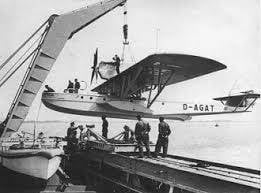
So when designing icebreakers of the "Stalin" type and icebreaking steamers of the "Dezhnev" type, these flying boats were planned for each ship, one unit at a time.
All in all, Dornier created a car that could be called a seaplane classic. "Val" was in demand, it was bought, used, the aircraft fully justified all investments in development and brought world fame to its creators.
But it could have happened that the "Kit" would not have appeared at all. After the defeat of Germany in the First World War, the Germans were forbidden to build military aircraft and those types of civilians that could be converted into military ones.
Until 1933, when Versailles would be spat upon, it was still far away, and German aircraft designers began to creep across Europe. Claude Dornier left for Italy, where, in the seaside town of Marina di Pisa, the Dornier Metallbauten company was first registered, and then the Costruzioni meccaniche aeronautiche di Pisa plant, where the first Kit was born. The basis for the boat was the Gs II flying boat, which was thoroughly revised.
November 6, 1922 Hispano-Suiza HS8Fb engines with a power of 300 hp. for the first time they took to the air a plane called Do.J.
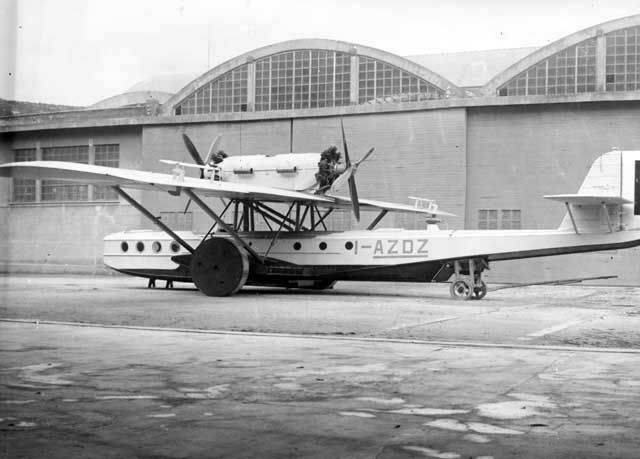
Given the degree of militarization of Italy, it is not surprising that all boats, except for the first copy, were produced in a military version.
The military "Kit" was to be used as a long-range naval reconnaissance. The aircraft was equipped with two cameras, planned and prospective. It was possible to hang four bombs weighing up to 100 kg on special pylons mounted on the fuselage. The defensive armament consisted of two turret machine guns of a rifle caliber, a course one and protecting the rear hemisphere.
The first buyer of Dornier Val was Spain. The Spaniards bought 15 aircraft, plus 19 (3 civilian) they made themselves under license. The boats were equipped with different engines, "Hispano-Suiza" HS8Fb (300 hp), "Rolls-Royce" "Eagle IX" (360 hp), "Elizalde" A.5 (licensed version "Lorrain-Dietrich" 12Eb , 450 hp), "Napier" "Lion V" (450 hp). The armament of the aircraft built for Spain consisted of two 7,7 mm Vickers machine guns.
Argentina became the second customer. The naval department of this country bought 5 aircraft with American Ford Liberty engines (400 hp). Armament similar to Spanish models.
The eternal competitors of Argentina, the Chileans, did not stand aside. Chile purchased 8 aircraft. Four with Napier Lion V engines, four with Rolls-Royce Eagle IX. Argentine and Chilean boats were armed in the same way as the Spanish ones, but they were immediately mounted on the sides of the pylons for bomb racks - two behind the pilot's cabin and two in front of the rear turret. After that, options were developed with the installation of various liquid and air-cooled motors with a capacity of 300 to 600 liters. from.
Despite the fact that the "Kit" was produced in Italy, the Italian military department ignored the plane, preferring its own boats "Savoy-Marchetti". 3 military modifications and 3 civilian ones were purchased. But military aircraft did not carry weapons, and were used in auxiliary services. fleet.
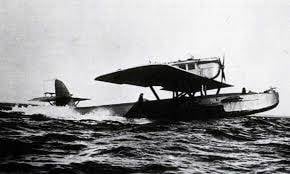
The Dutch Navy has become the largest aircraft purchaser. 46 boats were delivered, the majority were manufactured under license by Aviolanda (41 units), the rest came from Italy.
Engines "Lorrain-Dietrich" LD 12ЕЬ (450 hp) and "Lorrain-Dietrich" "Kurlis" (600 hp).
Yugoslavia acquired 11 aircraft with different engines: BMW VI (600 hp), "Gnome-Ron" GR 9A "Jupiter" (480 hp), "Hispano-Suiza" HS 12Ydrs (860 hp), Rolls-Royce Kestrel (685 hp).
The armament consisted of two 7,7-mm Darn machine guns. The mass of the bomb load of the Yugoslavian "Whales" reached 1000 kg.
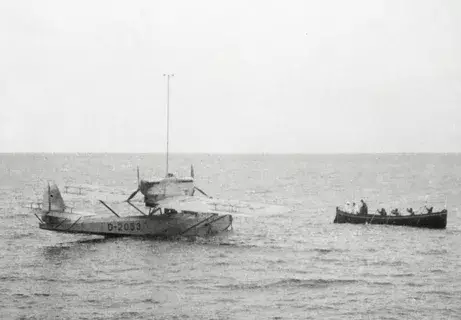
The Soviet Union acquired a total of 22 combat flying boats for the needs of the Red Army Air Force, which then included naval aviation. The engines were Lorrain-Dietrich LD 12Eb (450 hp) and BMW VI (600 hp).
Armament consisted of two 7,62-mm coaxial machine guns DA, bomb load 800 kg.
And besides these cars, in the 30s, 4 civilian modifications with BMW VI 6,0 engines were purchased.
How was the service of these aircraft.
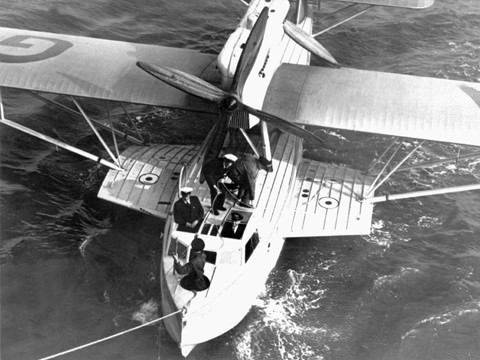
The Spaniards were the first to start. "Whales", having got "from the ship to the ball," took part in the colonial war, which began in Morocco in 1921 and lasted until 1926. Boats patrolled the coastal area and carried various cargo.
After the end of the war, when the Spaniards appreciated the capabilities of these aircraft, demonstrations and attempts to set various records began. The Spanish Air Force was served by a talented and courageous pilot, a certain Ramon Franco. Younger brother of Francisco Franco, the future sole and long-term ruler of Spain.
In 1924, Ramon Franco flew from Cadiz to the Canary Islands and back. For overclocking. And at the beginning of 1926, Franco Jr. flew from Spain to Argentina on his own Ultra Plus boat. In 59 hours and 35 minutes. The distance that Franco's crew flew was 10 km, in addition, it was the first flight across the South Atlantic from east to west.
The plane on which this flight was made was donated by the King of Spain Alfonso XIII to Argentina and is still in the Transport Museum in Lujana.
In the summer of 1929, Franco swung himself to a flight across the North Atlantic, but alas, it did not work out. I had to make an emergency landing off the Azores.
The machines, which were purchased by the Netherlands, successfully performed various tasks in the Dutch East Indies from 1927 to the mid-50s.
But the civilian version of the Whale has achieved even greater results than the military aircraft.
The civilian was distinguished from the military version by an enlarged bow, in which a closed cabin for 8-10 passengers was created. Two pilots and a mechanic were located behind the cabin, in an open cockpit under the front engine.
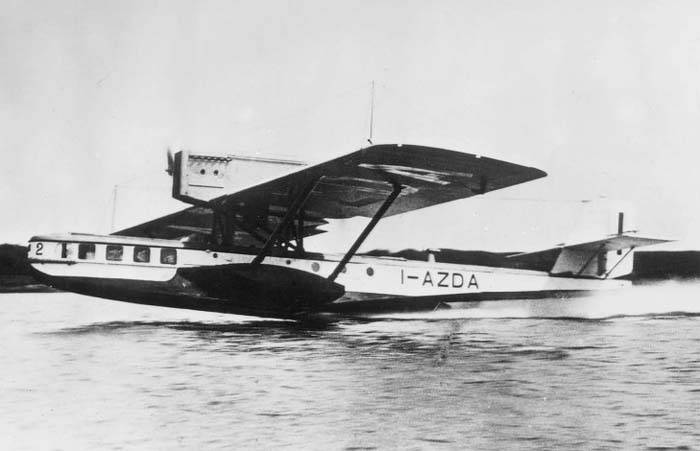
As a passenger seaplane "Val" were operated in Brazil, Italy, Germany.
The Italians tried to fly across the Atlantic in one of the civilian vehicles in 1926, but the attempt by the crew under the command of Lieutenant Pinedo was unsuccessful. The plane crashed and a mechanic died.
The whales flew from Rome to Palermo, Barcelona and Alexandria. The Brindisi-Athens-Istanbul highway was in operation. German boats flew from Hamburg and Kiel to Scandinavia and the Baltic States. But the most impressive route was Travemunde - Lisbon - Cadiz - Las Palmas (Canary Islands) and back with a load of mail.
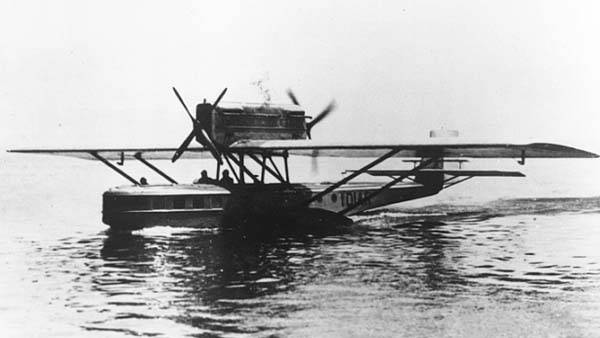
Colombia, Great Britain and Portugal had one Dornier "Val" civilian aircraft each. These machines were also used as postal vehicles and were highly appreciated by the flight and technical personnel for their reliability and ease of maintenance, good seaworthiness and flight range. With additional tanks, "Val" could fly up to 2200 km. Well, quite a decent carrying capacity.
Returning to the topic of records, it is worth mentioning that the German pilot Wagner and the Italian Grossio broke a total of 20 world records in payload flights during 1925 alone.
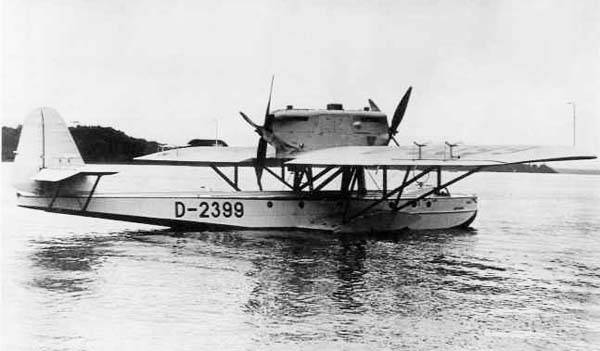
It is not surprising that the “Kit” became interested in the Soviet Union, where hydroaviation was going through hard times in the 20s. However, any aviation in the USSR at that time was going through very difficult crisis moments.
Float Junkers Ju-20 / Ju.20 flew in the Baltic, ancient Savoy-Marchetti S-16 in the Black Sea. Domestic MU-1 and MR-1 were already in production, but their flight range was quite insignificant, and seaworthiness was even lower. And what was needed was a really long-range scout, which was not there at all. The only aircraft of domestic production was the Grigorovich M-24 flying boat, a very mediocre and unsuccessful machine.
So we can say that Claude Dornier rescued the Soviet Air Force by selling aircraft to the USSR and thereby removing the headache from the command of the Red Army Air Force.
For the prototype, they chose aircraft that were produced for Chile. At the same time, the equipment on them was not installed German, but a "hodgepodge": English Vickers machine guns and compasses, French turrets and cameras, Italian radio stations, German watches and so on.
The main difference from the prototype was the Lorrain-Dietrich 12Eb motors, with a capacity of 450 hp. from. The Germans offered other options, but these French engines were known to Soviet engineers.
The Soviet side liked the plane very much, because it surpassed everything at the disposal of the Red Army Air Force Directorate.
The reports were full of positive ratings. Simple and easy to operate, excellent access to motors, dry and fast takeoff, simple and easy landing. The only drawback was the speed, which was only 167,8 km / h, which was significantly lower than the declared 195 km / h. Plus, Soviet engineers were seriously worried about the vibrations of the engine installation.
In the end, everything was decided by the selection of screws more suitable for a high-speed engine. They turned out to be the screws of the British firm "Fairy Reed". With them, the speed reached 187 km / h, and the operating ceiling rose to 3435 m. Regarding vibration, German experts gave assurances that its level is not dangerous for an all-metal aircraft.
The modification for the USSR received the Do.J Bos index. The aircraft turned out to be somewhat heavier than its predecessors, the increase in weight was due to the demand of the Soviet side to increase the bomb load. As a result, instead of 4 bombs of 82 kg each, it became possible to suspend 2 bombs of 250 kg and 4 bombs of 80 kg each. 250-kg bombs were suspended from the "gills", and not from the pylons on the fuselage.
Later deliveries of Dornier "Val" to the USSR were equipped with BMW VI 6,0 engines with a capacity of 600 hp. from.
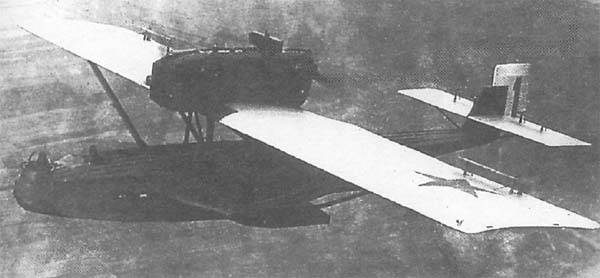
The maximum load of 2600 kg was not the limit for the "Kit". In reality, it was possible to load the aircraft with 3 kg of payload. True, it was necessary to pay for this with an increased mileage of 000 kilometers during takeoff and a deterioration in seaworthiness, but when did this stop the Russians? Especially if necessary?
The payload also meant fuel. The range of the "Kit" with additional fuel made it possible, for example, to cover the entire Black Sea. With the Junkers and Savoies it was impossible even to dream about it. Finally, the Soviet Navy had real eyes above the water.
The aircraft were used so actively that many of the Black Sea and Baltic by 1930 had exhausted their resources. But in general, by the mid-30s, "Val" began to become obsolete. More precisely, newer models appeared that were not inferior in range, but were cheaper.
So the Red Army Air Force Directorate decided to buy the Italian Savoy-Marchetti S-62 instead of Dornier boats, which was almost as good as the German in range, but excelled in speed and ceiling. The Italian boat was also inferior in seaworthiness and did not enjoy a reputation for being reliable, but it cost considerably less than the Kit.
But there were countries that did not buy aircraft, but established licensed production, fortunately, Dornier was not against it.
The Japanese approached the issue like this: they bought a license for the production of a civilian version, and "we'll see." But they never mastered the military models, and the passenger was significantly altered, changing the positions of the cockpit and the passenger compartment. There were not many aircraft produced that flew to Shanghai.
The Dutch also set up production, but of military seaplanes. They were very useful to them in the colonies. So much so that the production company Aviolanda maatschappij voor vliegtuigbouw was created especially for this. Aviolanda produced 41 aircraft, which were transported by sea to the colonies.
Flying boats were based on Morokrembangan, and for operations in remote areas, the floating base Castor was first organized, and then it was replaced by the more modern ship Poolster.
Dutch boats flew throughout the region, observing the movements of other countries' fleets. And they even managed to take part in a real naval battle. In January 1933, an uprising began on the battleship De Zeven Provincien off the coast of Sumatra. The crews of the flying boats attacked the rebel cruiser with bombs and obtained hits. One bomb hit the bridge, killing 19 people and injuring 11, four of them died later. We can say that the crews of the Whales were the tools that suppressed the uprising.
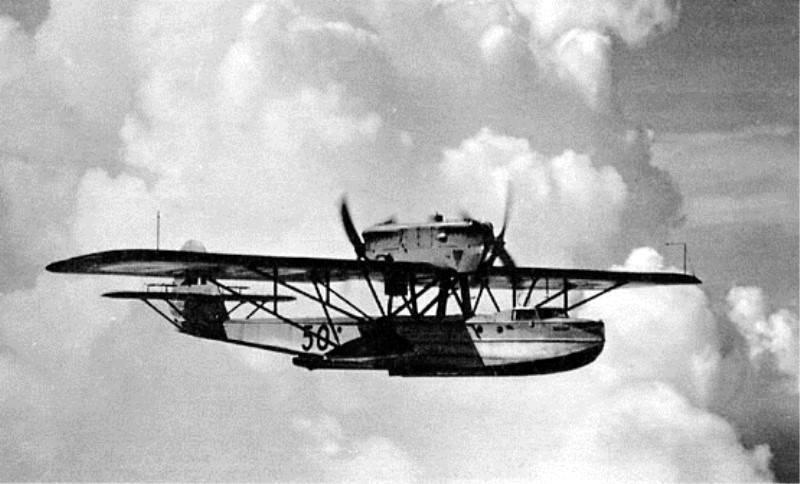
In 1938 the Dutch began replacing the Dornier Val with the Do.24K, the newer three-engine boats for which Aviolanda had acquired a license. But all "Whales" that were able to work at the beginning of hostilities in the Pacific Ocean took part in the Second World War against Japan. Mainly as patrol and rescue aircraft.
The Spaniards also launched the production of their favorite flying boats in Cadiz. For this, the company "Construcciones aeronáuticas sociedad anónima" (Joint Stock Aircraft Building Company) was created, which manufactured 19 aircraft.
These vehicles took a direct part in the Civil War, patrolling coastal waters and even as a night bomber. It is known that the last Spanish Dornier Val was decommissioned on September 25, 1950. This is the record for the length of service of the "Whales".
It is impossible not to ignore the two planes that the American L. Ellsworth bought for R. Amundsen. The Norwegian polar explorer appreciated the all-metal construction of the aircraft, which made it possible to effectively use the aircraft both in the tropics and in the Far North.
Therefore, Ellsworth bought two Whales for Amundsen, and Amundsen equipped the expedition. Each plane had 3000 liters of fuel, 180 liters of oil, 500 kg of various supplies, and three crew members. The planes were equipped with Eagle engines from Rolls-Royce.
It was on these aircraft that on May 21, 1925, the pilots L. Dietrichson and H. Riiser-Larsen, the researchers R. Amundsen and L. Ellsworth, the flight mechanics O. Omdal and K. Focht set off to storm the North Pole. However, due to technical breakdowns, it was necessary to land in the region of the 88th parallel, while one aircraft was severely damaged.
The second plane (No. 25) returned to Svalbard and its further fate is worthy of a detective story.
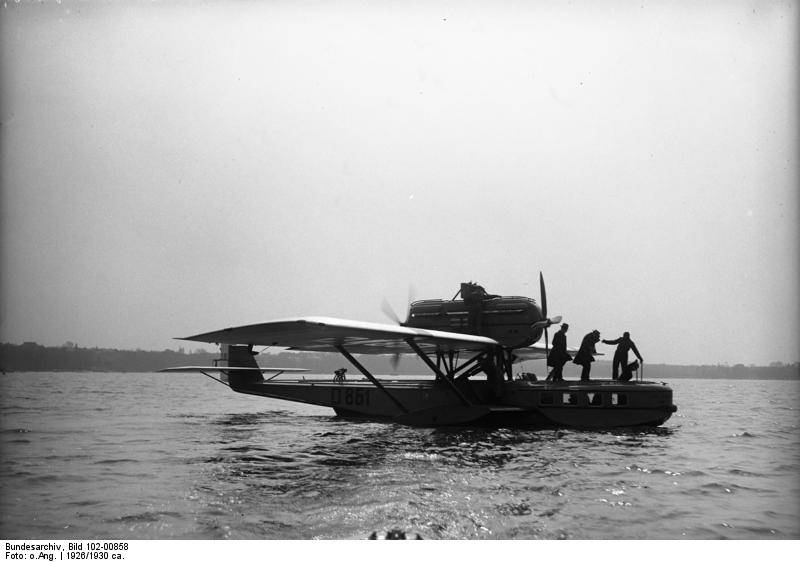
In 1927, it was bought by the Irish pilot Cartney, who tried to cross the Atlantic on the Whale. On approaching the island of Newfoundland, one of the engines caught fire and had to land on the water. The crew was picked up by a passing steamer, and the plane was rescued and taken out on another ship. The ship was Italian and the plane ended up in Italy.
After repairs, through complex machinations, the plane got to Germany and ended up in a training center in the city of Liszt. There, the Rolls-Royce engines were replaced with a BMW VI and the plane trained future naval pilots.
And in 1930, pilot Wolfgang von Gronau literally "borrowed" it and flew from Liszt to New York via Iceland and Greenland. The plane returned to Liszt on board the motor ship and was used as a training aircraft for about two more years.
Two Italian boats "Val" participated in the search for the crew of the Umberto Nobile airship that crashed in the Arctic. These machines are interesting in that for the first time the cockpit was made closed on them.
But, perhaps, the Whales did not work for any country in the world as they did for the USSR in terms of work in the Arctic. The first "Val" appeared in the Soviet Far North in 1928. The boat was named "Mossovet" and in the winter of 1928-29 alone it carried 135 passengers, 2,5 tons of mail, having flown more than 100 thousand kilometers. Moreover, the "Kit" flew both from the water and from the ice surface. In this regard, the resource of the machine was impressive.
In the same 1928, the crew of another plane, the Soviet North, tried to fly along the Northern Sea Route from Vladivostok to Leningrad. GD Krasinsky was in charge of the flight, but alas, the flight was not crowned with success. Out of 14 km, the crew covered only 000 km, and due to an accident in Kolyuchinskaya Bay, they had to return to Vladivostok.
The third aircraft, called "Komseveroput", under the control of the famous pilot Boris Chukhnovsky, helped ice reconnaissance icebreaker "Krasin", which was escorting ships along the Northern Sea Route.
It was "Komseveroput" that took part in photographing Angarstroy, surveyed the area of the fall of the Tunguska meteorite, and in August arrived at Novaya Zemlya. With the help of three ice scouts, during the navigation of 1930, 46 ships were able to pass through the Kara Sea.
The successful use of the Dornier "Val" at first led to an increase in the number of these boats in the North. The boats were both purchased and transferred from the Air Force as they were decommissioned. They conducted ice reconnaissance, delivered people and cargo to distant wintering grounds, and were used in scientific research in the Arctic.
In the extreme conditions of the north, the Whales have repeatedly demonstrated their amazing strength and reliability. Among those who flew the Dornier "Val" were such famous pilots as IV Doronin, MI Kozlov, IP Mazuruk, VS Molokov.
VS Molokov in 1936 made a flight of 26 km along the route Krasnoyarsk - Ust-Kut - Yakutsk - Nagaevo - Petropavlovsk-Kamchatsky - Commander Islands - Anadyr - about. Wrangel - Rogers Bay - about. Vaygach, and then through Arkhangelsk arrived in Moscow.
Until the beginning of World War II, the Dornier Val seaplanes remained in the ranks of the Soviet polar aviation.
And then the Second World War began. And the Dornier planes, which by that time could by no means be called full-fledged and modern, went to fight.
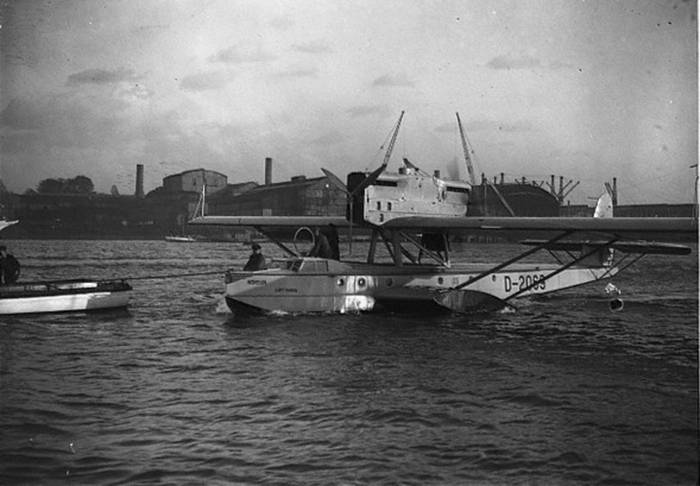
The "whales" of the Dutch East Indies Air Force entered the war and took part in its initial stage. The Dutch did not have many of these boats left. One "Dornier" was shot down by Japanese fighters in February 1942, another was burned by the Japanese in March during an air raid on the airfield. The rest, apparently, were destroyed by the Japanese at the captured airfields, since Dornier "Val" was not listed among the remnants of the Dutch East Indies Air Force, which were evacuated to Australia.
The Yugoslav vehicles also fought. Not for long, but they fought. The fleet of the Yugoslav naval aviation was very motley, but it consisted of more than 10 aircraft of different years of construction and configurations. After the outbreak of the war between Italy and Greece, Yugoslavian seaplanes patrolled the Adriatic Sea in the border areas. There was even a seaplane base ship "Zmay" in service.
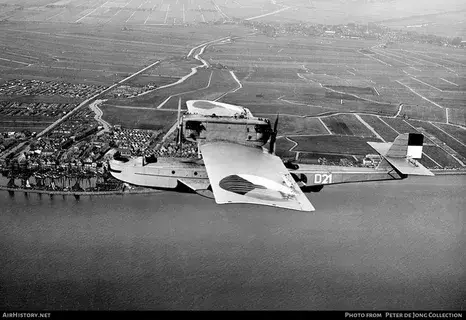
The Yugoslav aircraft were unlucky, mostly they were disabled or destroyed by Italian aircraft.
The Soviet Whales were also called up for military service. Basically, however, they performed the duties of transport aircraft. In addition, flying boats also performed search and patrol duties, as the 2nd special group of the famous Colonel I. P, Mazuruk, who worked in the Northern Fleet.
These aircraft were re-armed, the coaxial machine guns YES were replaced by ShKAS. The Whales conducted ice reconnaissance, transported mail and cargo, and searched for enemy submarines. The Dornier boats were operated in the Northern Fleet until early 1942, then they began to be changed to Catalina.
In the Pacific Fleet, the boats flew until mid-1942 as part of the 132nd mixed squadron.
In general, for more than a quarter-century of service, Dornier "Val" have become classics of seaplane aviation. They were truly luxurious flying boats, simple and reliable. Claude Dornier created a simply beautiful plane that entered history world aviation.
LTH Do.J / Do.16 Bos
Wingspan, m: 22,50
Length, m: 16,20
Height, m: 4,70
Wing area, м2: 96,00
Weight, kg
- empty aircraft: 3 630
- maximum take-off: 5 700
Engine: 2 x BMW VI 6,0 x 600 HP
Maximum speed km / h: 185
Cruising speed, km / h: 160
Practical range, km: 3 600
Practical ceiling, m: 3 500
Crew, people: 2-4
Armament:
- one 7,62 mm machine gun in the nose turret
- one 7,62 mm machine gun in the tail turret
- bombs up to 1000 kg on external suspensions
More than 250 aircraft were manufactured in total.
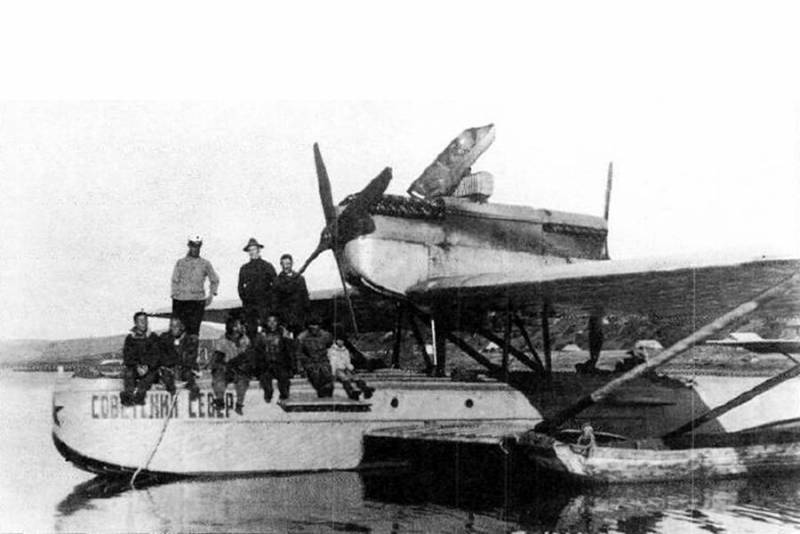
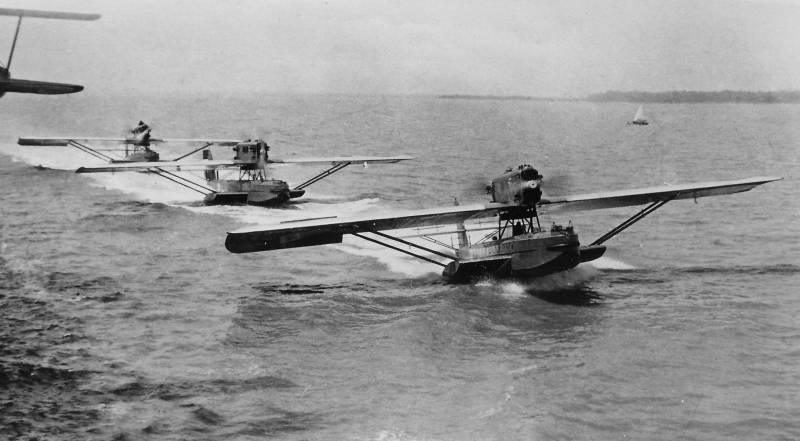
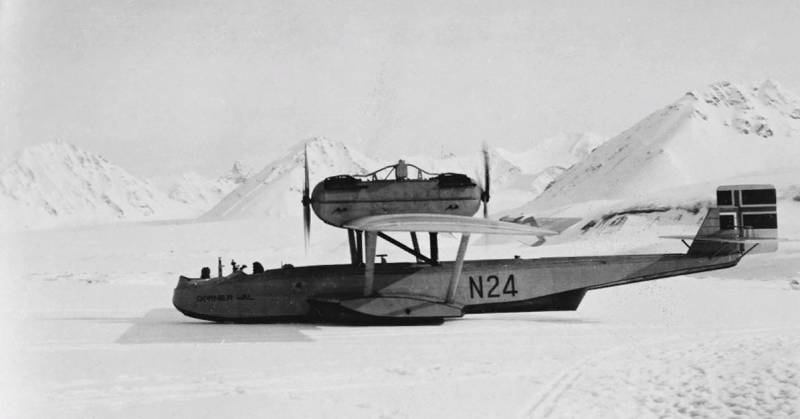
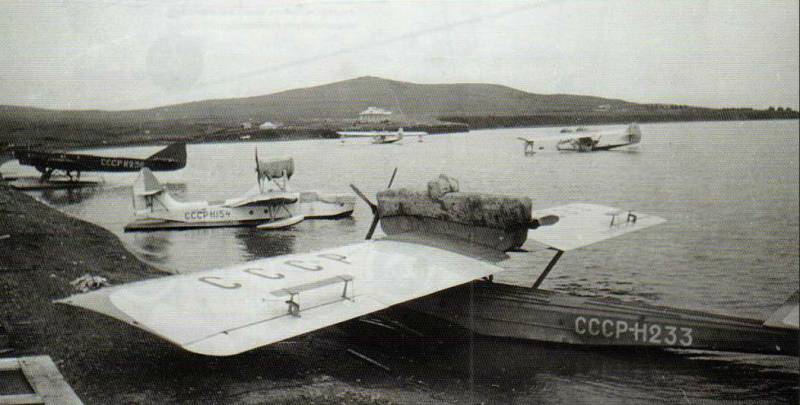
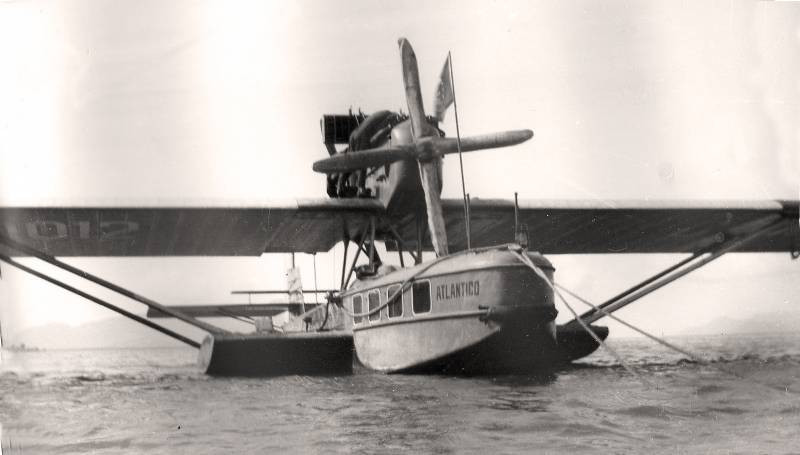
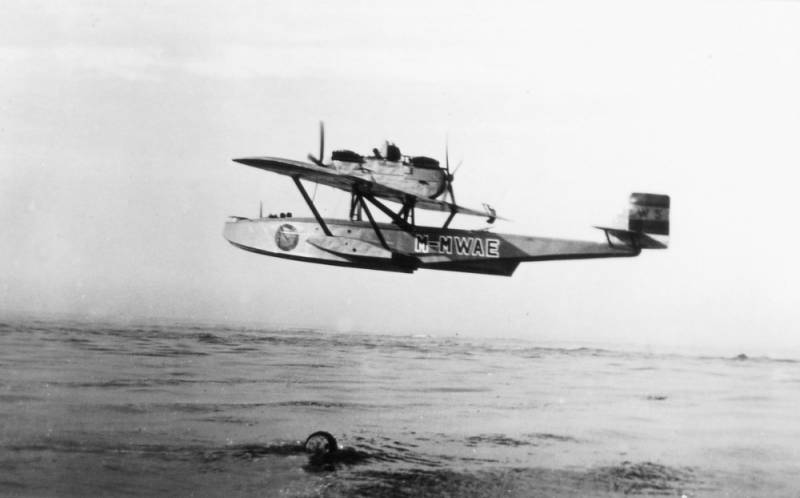
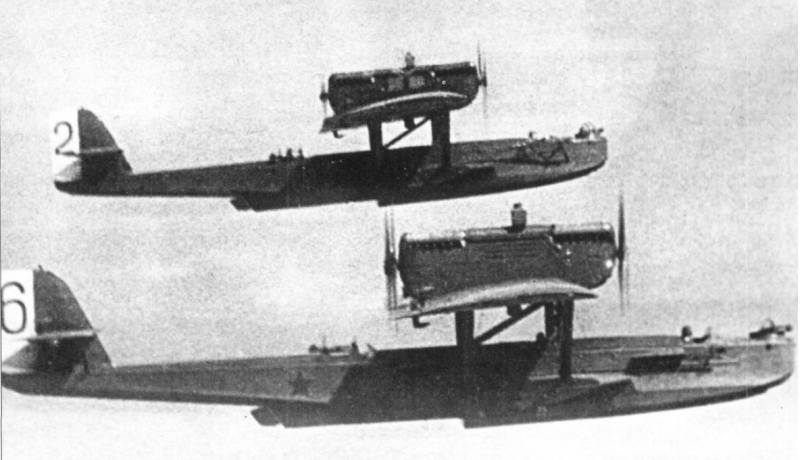
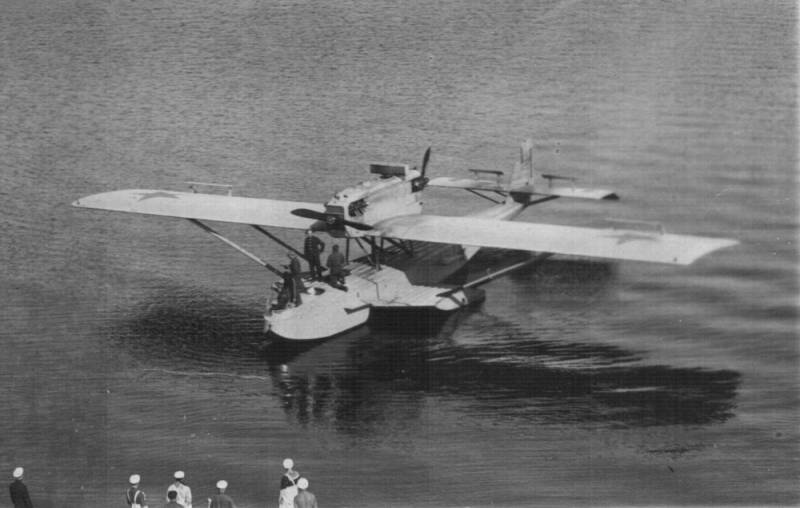
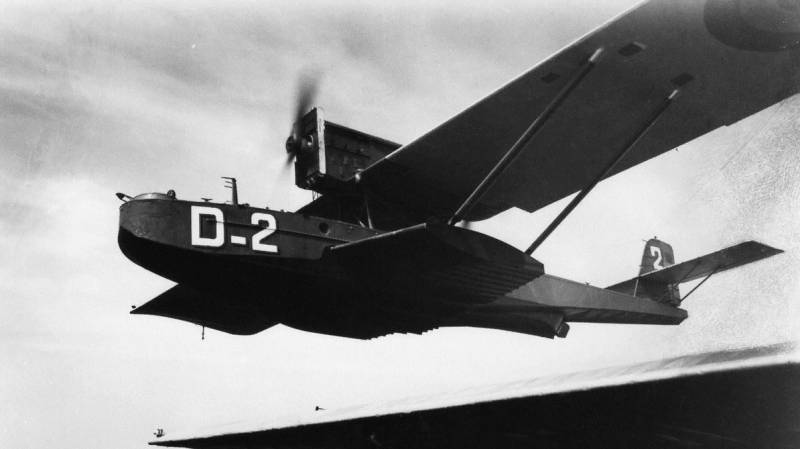
Information